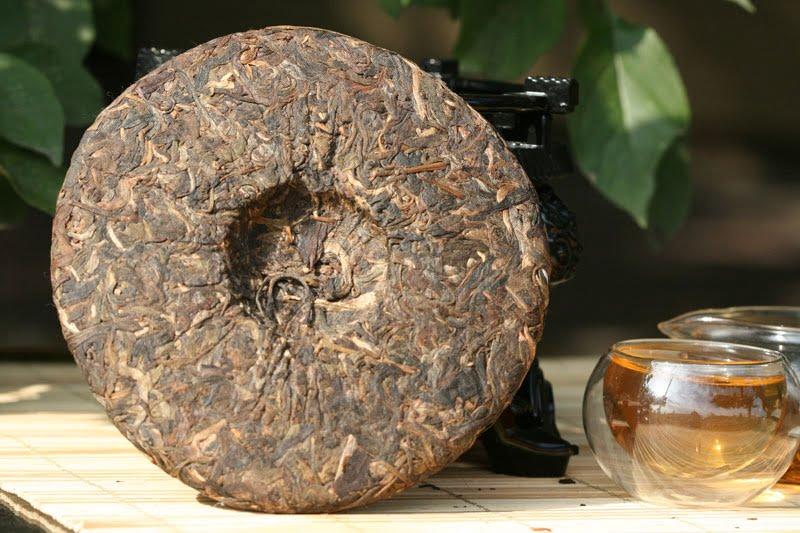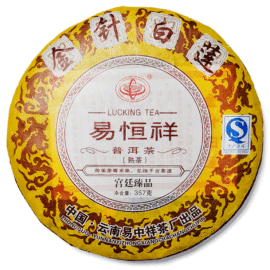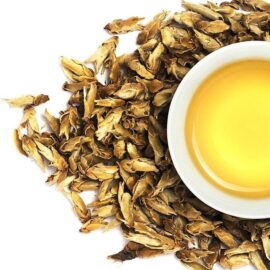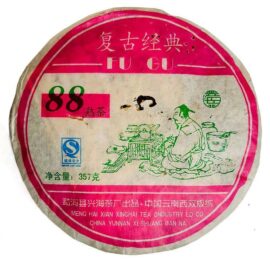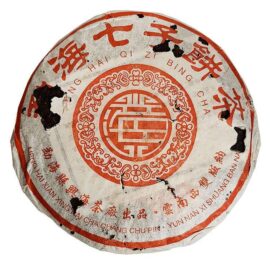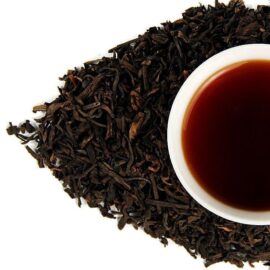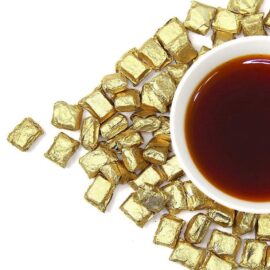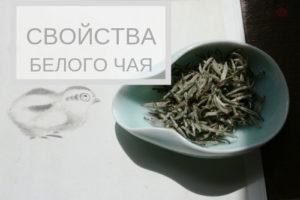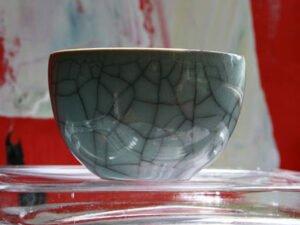Pu’er. How much is hidden in this famous tea name. Pu’er comes in dark(Shu Pu’er), green(Shen Pu’er) and white(Bai Pu’er) varieties.р). However, some people also distinguish purple (Zi Puer) and resin Puer (Cha Gao) as separate types. How to make sense of it all? We can help. Here’s everything you need to know about puerh!
TOP 5 INTRODUCTORY FACTS ABOUT PU’ERH
FACT #1. The homeland of Puer tea (puer, 普洱茶, pu erh cha) is Yunnan province. A corner of China filled with tropical jungle that borders Vietnam, Laos and Myanmar, and even the Tibetan foothills.

LOVE IT! Yunnan is the oldest tea producer in the world! It is from this area that tea itself, as a plant – Camelia Sinensis (Camellia chinensis) – originates. There are still trees in Yunnan that are over a thousand years old!
FACT #2. The name “Puer” comes from the name of the area (now a city district and formerly a trading town) from which tea was brought by caravans to the farthest corners of Asia during the Tang Dynasty. Any tea from that area was called “pu’er” regardless of its characteristics.

LOVE IT! It was from the Puer area that the famous Great Tea Route began! The length of one of these dangerous roads to Lhasa (Tibet) was more than 1500 km. and took almost a year from the moment of departure to return home.
FACT #3. Today, Pu’er is made not only in Yunnan, but also in Guangxi, Guangdong and even northern Vietnam. However, the Yunnan Provincial Bureau of Standards insists on its definition that Puer is a fermented green tea product originating from large tea leaves harvested in Yunnan Province.

LOVE IT! There is a term Mu Shu Cha (母树茶) for “mother tea trees”. One of these trees is a tree discovered in 1996 that is over 2,700 years old. This national treasure is located in the tropical jungle of Zhen Yuan in Yunnan. However, this is not the limit, because in Fengqing County there is still a tree in the Guinness Book of Records. The tree bears the proud name of Jinxiu Cha Wang, which translates to the Tea King of Jinxiu. The age of the king today is more than 3200 years old.
FACT #4. Since ancient times, puerh has been pressed into a wide variety of forms. This was due to the convenience of transportation and storage. This is how such different shapes as “tortillas”, “bricks”, “bowls” and other forms appeared, which you can buy in our store.

LOVE IT! Bulk tea, in particular puerh, appeared much later than pressed tea. And that is only because the urgent need to deliver tea in caravans disappeared, and this happened with the development of transportation infrastructures.
FACT #5.A special method of tea processing allows pu’erh to improve over time, much like a good wine or brandy. There is a term called “lao” which means “old” or “aged”. This is the kind of pu’erh that is most appreciated by its lovers.

LOVE IT! In China and beyond, one hears about the phenomenon of “tea investment”. Given that tea made from good raw materials will only get better and more expensive over the years, pu’erh becomes a great investment.
HOW AND WHAT IS PUERH MADE FROM?
Here you can buy puerh, different ageing, locality and forms of pressing. But as in any other tea, the key to its quality is the raw material. For the most part, it is the raw material that determines the price of pu’erh. What “seeds” were put into it, that is what will “grow”. In other words, not every aged puerh is expensive and valuable by default. Everything lies in where, how, when and what kind of harvest was gathered, and of course it is important what processing technology it passed and how after that “ripened”. And we will tell you about all of this, of course!
1. Locality, raw materials, crop. Yunnan is a rather large province, the population of which currently exceeds the population of Ukraine by 3 million people. On the territory of this province there are dozens of tea regions with their own cultivars (varieties of tea trees) due to the special, unique local climate and local soil.
According to the modern international botanical classification, Camelia Sinensis includes 3 varieties, 23 botanical species and 380 agrotypes. At the same time, 260 agrotypes are concentrated in Yunnan. Among the most common plants used for Pu’er tea are: Menhai Da Ye, Fengqing Da Ye, Linqiang Da Ye, Dali Cha, Nanchuan Cha and many others. All of them were created by nature itself, without human intervention many thousands of years ago. However, there are also modern examples, such as Jin Gu Da Bai Cha, which has a history of only 150 years.
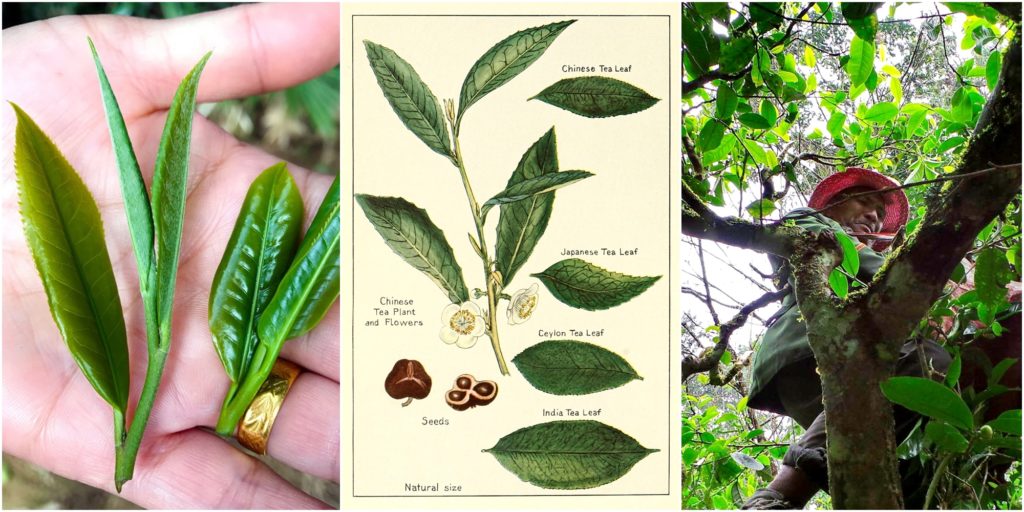
As for the terrain, a great variety awaits us here as well. Xishuangbanna, Pu’er County, Lingcang, Baoshan, Dali County and others. In each of these areas, there are dozens of authentic mountains and small villages that have been making very specific types of puerh since ancient times. These include the villages of Laobanzhang and Bingdao, the regions of Mengku and Xiguei, Menghai County and of course the mountains of Nanyoshan, Yiwu and Bulangshan.
Yunnan is harvested several times a year due to favorable climatic conditions. The period from April to July is the most popular.
2. Mao Cha, meaning “raw tea”, is the main stage of pu’erh production. Only after the raw tea is ready is it sent for further production, like Shu Puer, or left to “mature” like Shen Puer. Mao Cha is produced as follows:
- Harvesting, drying, wilting. Harvested tea leaves, buds or a particular blend of the former and the latter are dried in the sun immediately after picking, then twisted and dried again. Under industrial conditions, the leaves are placed on grids in a room heated by water heating.
- Heat treatment. In Chinese, this stage is called “shaqing” or “killing the greens”. The purpose of this stage is to “fix” or “stop” the natural fermentation of the raw material. This is done by steaming and sometimes even frying.
- Twisting. The leaves are twisted by hand on a bamboo mat to give them the shape of a large ball. In small manufactories, the twisting is done by hand, while in large production facilities it is done by means of a special automatic roller. This is an important step that determines the richness of flavor and aroma, because when the tea leaves are squeezed, the juice of the tea leaves comes out and reacts with oxygen.
- Re-drying. The raw material is dried finally this time in the sun or in a special greenhouse at regulated humidity and temperature depending on the weather conditions.
- Sorting. Manual sorting clears the leaves of any unwanted twigs, etc.
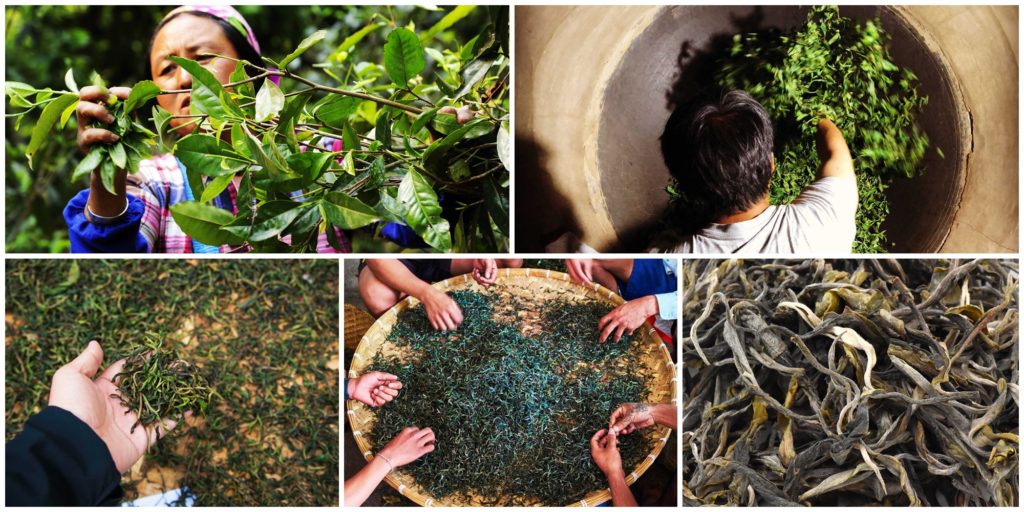
And so Mao Cha is ready. It is not uncommon for the farmers who produce it to then sell it to other producers who press the leaves into different shapes and sell them. From this point on, however, the technology for producing Shen and Shu puerhs is different.
HOW ARE SHU AND SHEN PUER BORN AND HOW DO THEY DIFFER?
In fact, these two puerhs are opposites of each other. Shu Puer is a dark, “black” tea with a deep infusion color and a rich, nutty and chocolatey aftertaste. Shen Puer is a light, “green” tea with a clear infusion color, bright dried fruit and sweet aftertaste. What makes such a difference after making Mao Cha? It’s simple!
If our cooked Mao Cha is pressed into the required shape with the addition of a paper “nei fei” (trademark), it is in fact a young Sheng Puer, which will become more valuable and rich with time and years. This is why Sheng Cha is translated as “raw tea”.
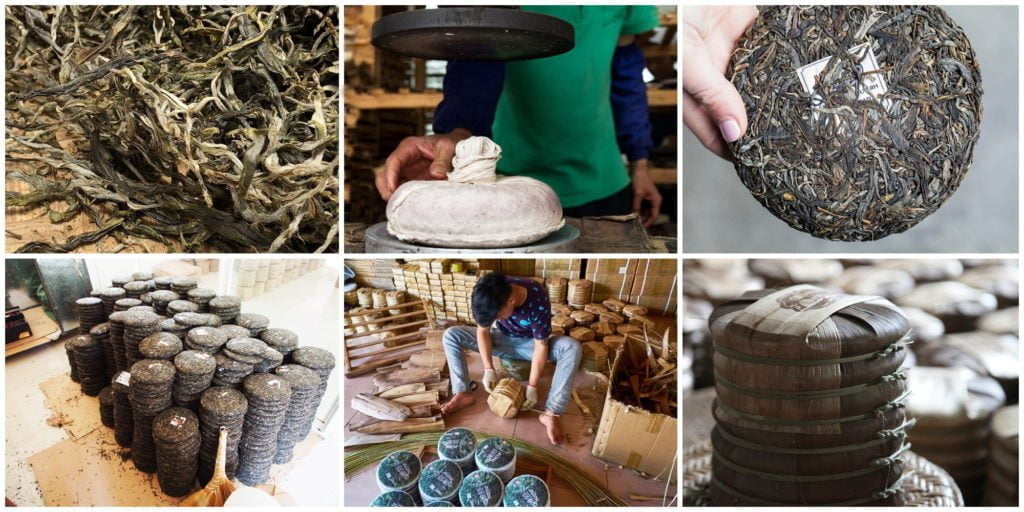
Hence, Shu Cha can literally be translated as “ready tea”. It is called ready because this tea has undergone a special stage of accelerated fermentation “wodui”, which was invented by the technologists of the famous Menhai factory “Da Yi” (formerly Kunming Tea Factory) in 1974. Thus, Shu Puer as a separate variety of tea is not even 50 years old yet! And the popular today division into Shen and Shu began to be taken seriously in China only in the 90s.
So what is this “voduy” technology? Literally it can be translated as “wet heap”, but in Russian interpretation the term “wet skirdovanie” is often used, named after the analogy with haystacks.
In order to commit “vodui” it is necessary:
- Fermentation. Mao Cha are spread out in a room where they will be kept in a small amount of water, covered with a cloth. They are then subjected to high temperature and humidity for 45-65 days and turned at regular intervals. In essence, this process is very close to “fermentation”.
- Sorting. The finished Shu Cha is sorted to remove leaves that have not undergone fermentation.
- Pressing. The leaves are stacked in groups according to the desired weight of the cakes. And just as in the case of Shen Pu’er, a piece of paper with a trademark (“nei fei”) is added to the future mold. The wet leaves are then placed in a cloth and then pressed under a hydraulic press into the desired shape.
- Drying and packaging. The finished tea “pancakes”, “bricks” or other shapes are dried for a few days in a ventilated area and then packaged in handmade paper.
LOVE IT! Unlike other teas, the term “fermented” is not used for pu’erh, but “post-fermented tea” (hou foxiao). This is due to the influence of microorganisms and enzymes, humidity and high temperature on the raw material. The main microorganism that affects the quality of fermentation and organoleptic properties of tea is a mold fungus of the genus Aspergillus. The influence of this fungus in puerh becomes noticeable from several months to many years, which is why Lao Cha – aged old tea – is so valued.
WHAT ARE WHITE PUERH AND PURPLE PUERH?
These two categories of tea more often than any other nowadays cause controversy regarding their classification. Let’s get to the bottom of it.
Bai Puer or Bai Hao Pueris a tea made from puerh raw material using white tea technology. For this reason, it can be safely attributed to white tea, according to the nature of its production, but also to Puer, because the raw material is Yunnan Da Ye Camelia Sinensis. In addition, there is an opinion that Bai Puer is a kind of Shen Puer, because white puerh is perfectly prone to aging for years. However, the same fact unites it with white tea, which also becomes more valuable with age.
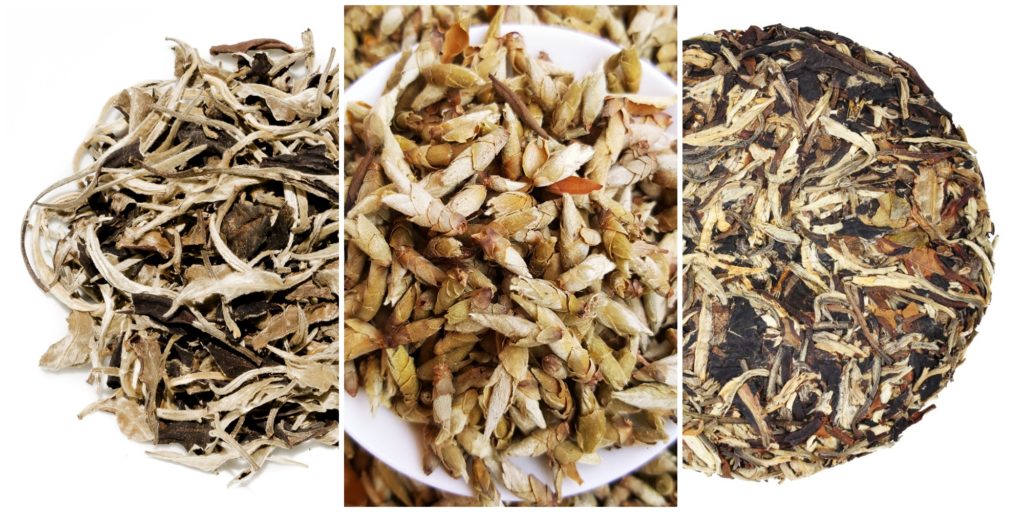
Purple, violet or Ji Puer is essentially Shen Puer produced according to the familiar technology, but the raw material contains the lion’s share of tea leaves and buds of purple and violet colors. This is due to the fact that different cultivars of Camelia Sinensis have their differences as a consequence of natural mutation. The result of one such mutation is anthocyanin pigments, which are natural colorants in plants. Until recently, leaves and buds with purple pigment were excluded as rejects during sorting. Today, however, Shen Puer is becoming increasingly popular, consisting entirely or mostly of Ji Cha, a purple tea.
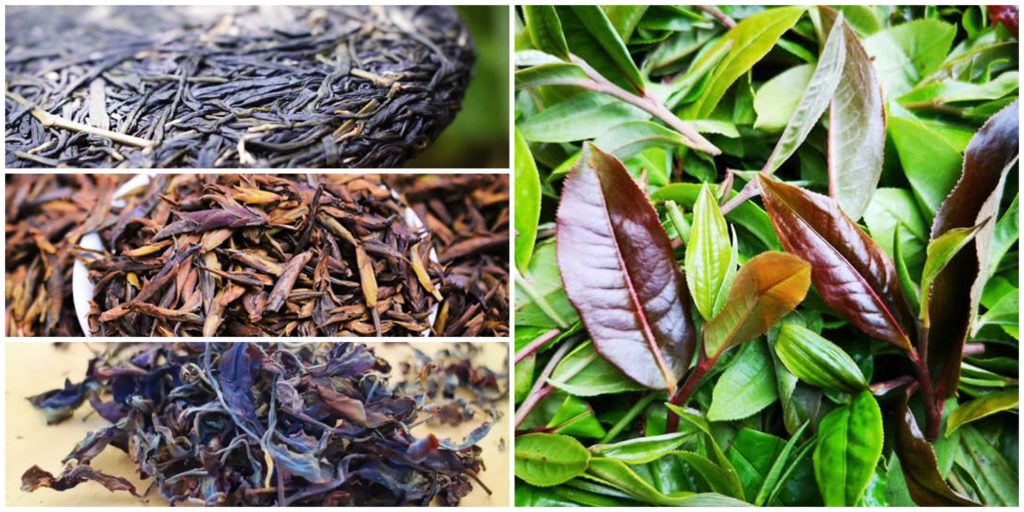
BENEFICIAL PROPERTIES OF PUERH
If legends are to be believed, the great Shen Nung, who lived in the 27th century BC, discovered both the tea itself and its medicinal properties. It is believed that it was Shen Nong who wrote the Ben Zao Jing (“Canon of Roots and Herbs”), in which tea was first mentioned.
LOVE IT! During the Shen Nung period, “tea” was pronounced Tu, meaning “bitter plant”. It was not until the Tang Dynasty that the familiar pronunciation and spelling of the character Cha (茶) was adopted
And closer to the beginning of our era (in the Eastern Han era), the famous healer Hua To wrote the Shi Jing (“Canon of Food”) in which he described in detail the medicinal properties of tea. But what is applicable to pu’erh these days? Let’s find out!
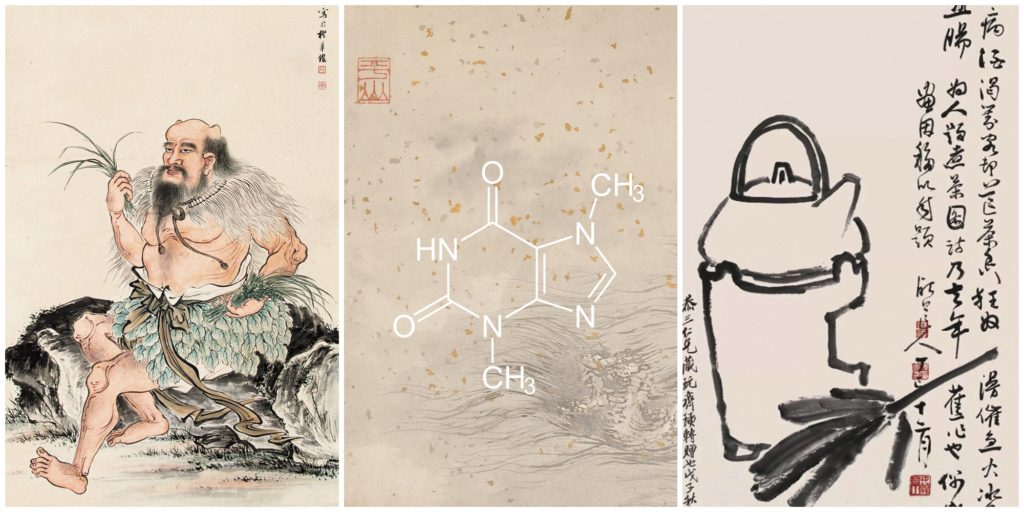
Puer contains more than 100 different compounds and substances that determine its beneficial qualities. The main groups include phenolic compounds, alkaloids, essential oils, proteins, carbohydrates, pectins, pigments, saccharides, vitamins, enzymes and minerals.
Within these chemical categories are the notorious “tannins” (tannin), catechin groups, caffeine (very little), theophylline, glucose, sucrose, α-carotene β-carotene, vitamins A (retinol), C (ascorbic acid), E (tocopherol), P (bioflavonoids), PP (nicotinic acid – vitamin B3).
LOVE IT! The Kunming Institute of Botany at the Chinese Academy of Sciences has discovered the substance thymidine in Puer tea, which is now widely used to synthesize the medical drugs Stavudine and Zidovudine, which are used to fight HIV/AIDS.
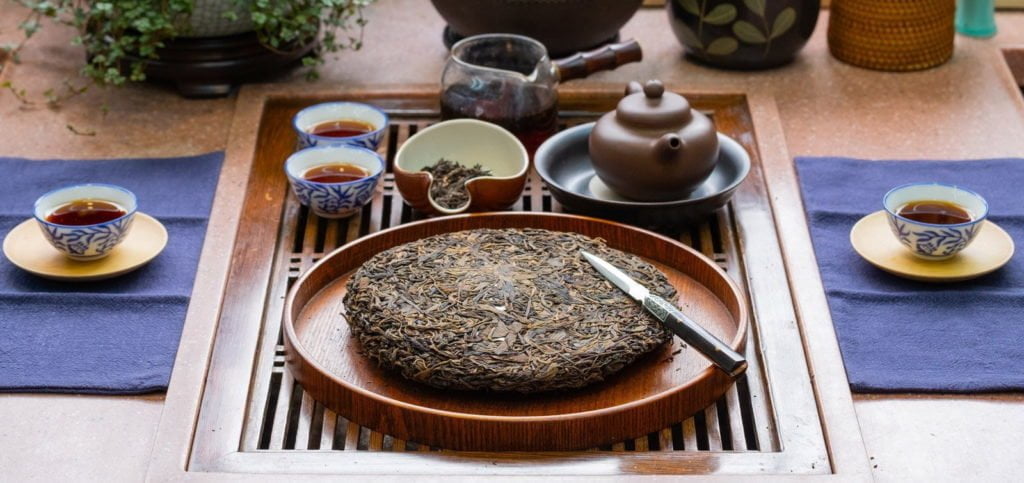
You can read more about how favorably Puer affects your body and what other effects Puer has in store for you here.
And now the top 5 beneficial qualities of Pu’er:
FACT #1. Lowers blood cholesterol and sugar levels by affecting the circulatory system.
As a consequence, it prevents the development of cardiovascular disease, which reduces the risk of heart attack and stroke;
FACT #2.Improves the work of the gastrointestinal tract.
As a consequence it promotes the process of digestion and metabolism and as a consequence contributes to the reduction of excess body weight normalizing metabolism and breaks down fat;
FACT #3. Removes intoxicants from the body and cleanses the body.
As a consequence, it helps with various poisonings, including both food and alcoholic;
FACT #4. Invigorating and toning.
As a consequence clarifies the mind, thoughts and keeps the body toned;
FACT #5. Helps keep you young.
As a consequence, it rejuvenates the body at the cellular level, slowing down the aging process.
HOW TO STORE PU’ERH?
The rules for storing Puerh differ markedly from those for other types of tea. You can read about how to store tea at home in detail here.
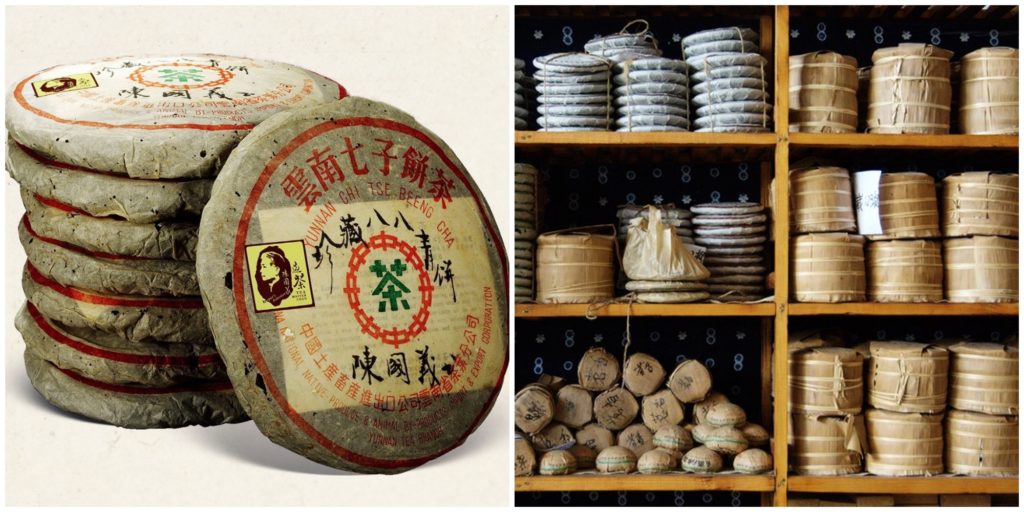
And as for Puerh, the general rules apply to all its kinds, viz:
Can:
The tightness of the packaging is not so important for Puerh, as it is most often a pressed “pancake” or “brick” wrapped in paper. In this form, the tea can be perfectly stored on a shelf in your home, and in a lighted room.
Do not:
It is not at all desirable to allow direct sunlight, because otherwise, the tea may “burn out”. The next enemy of Puer is foreign odors. Sharp, for example, “kitchen” odors or incense in this case can “spoil” the most valuable and expensive for you Puer.
Recommended:
Collecting is a delicate business. It is not so easy to create favorable conditions for “aging” Puer and maintain them, taking into account the above mentioned. This is also due to the fact that the climate of most CIS countries is quite different from the homeland of this tea – Yunnan province. Too dry air in this case is not recommended, and therefore, special attention should be paid in winter, when most apartments include central heating. Here a humidifier or a bowl of water placed next to Shen Puer will help.
Enjoy your tea party!
